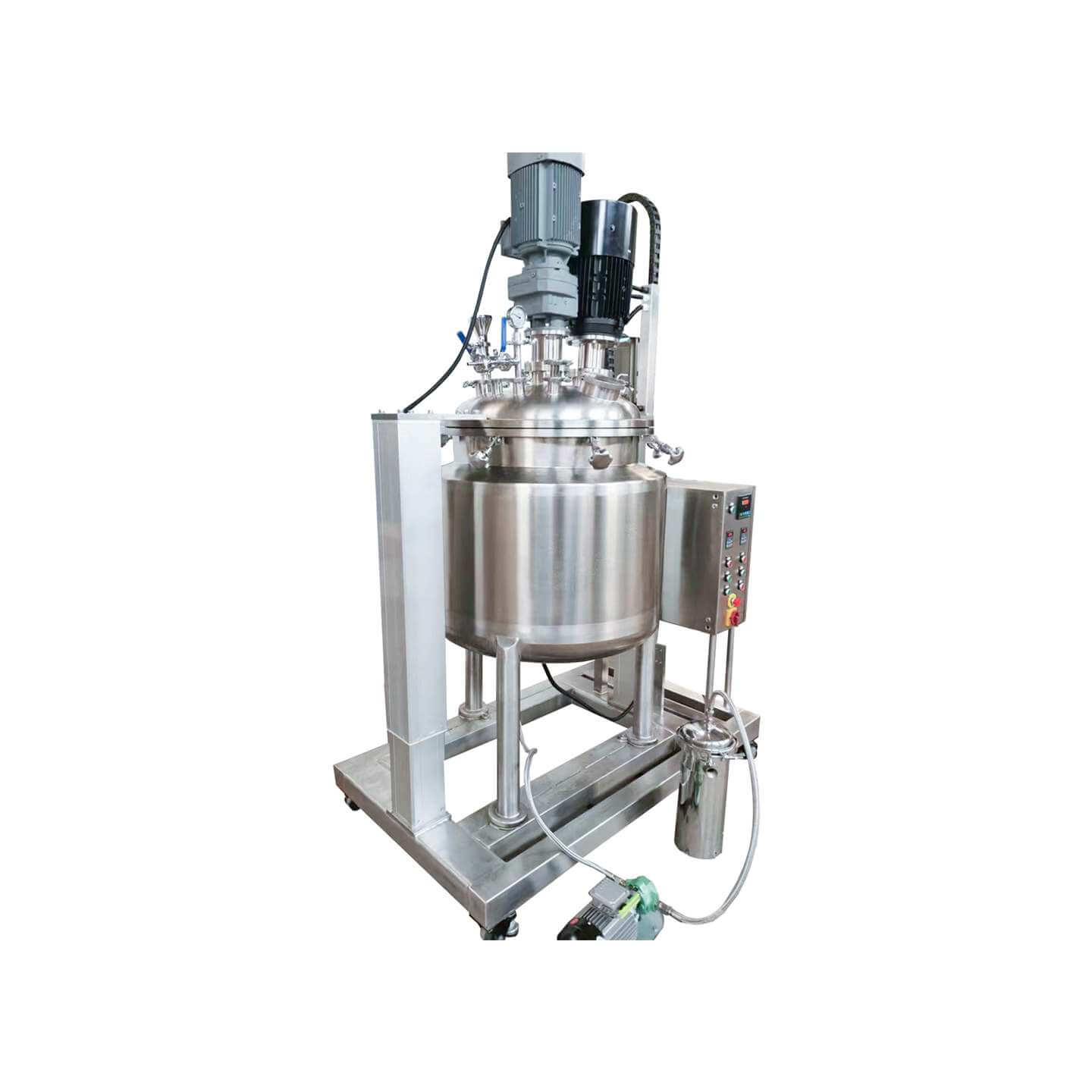

Laboratory Reactor
Laboratory reactor: used in the chemical industry, pesticide, paint, and other fields
Material
glass, stainless steel (316, 304), carbon steel, others
Capacity (L)
10-10000+
Mixing system
anchor, paddle, frame and others
Heating system
electric heating, oil heating and others
The laboratory reactor is small in size, beautiful in appearance, light, and fast in installation. It is composed of a pot body, pot cover, stirrer, jacket, support and transmission device, shaft sealing device, etc. The type of stirring device, rotation speed, sealing structure, heating method, etc. are produced.
Request a quoteThe small laboratory reactor is a production or experimental equipment that integrates the advantages of a reaction vessel and realizes raw material feeding and product output systems through a certain reaction condition control system. It has become an indispensable item in small laboratory reactor equipment. Small laboratory reactors are composed of reaction vessels, stirrers and transmission systems, cooling devices, safety devices, heating furnaces, etc.

Small laboratory reactors are often used by factories or laboratories to complete many processes such as sulfonation, nitration, hydrogenation, alkylation, polymerization, and condensation of organic dyes and intermediates. Replace tedious manual operations with production automation and continuity, such as program control. Not only can it ensure stable production, improve product quality, and reduce physical labor, but also eliminate environmental pollution.
During the operation of the small laboratory reactor, the operator needs to pay special attention to its reasonable use, otherwise, it will be easily damaged and cause personal safety problems. The chemical industry uses a large number of small laboratory reactors. Due to the corrosiveness of the medium, hot and cold reaction conditions, transportation, use, human factors, and other issues, it is easy to cause damage to the reaction layer of the small laboratory reactor and affect the entire production.
Characteristics of small laboratory reactors
1.The body and lid of the small laboratory reactor kettle are made of 1Cr18Ni9Ti stainless steel. The kettle body and flange are connected through threads, and the kettle lid is an ordinary flat lid. The two are tightly connected by main bolts and nuts evenly distributed around the circumference.
2.The main sealing port of the small laboratory reactor adopts A-type double-line sealing, and the remaining sealing points adopt the sealing form of linear contact between arc surface and plane, arc surface, and arc surface, which depends on the high precision and smoothness of the contact surface. To achieve a good sealing effect.
3.A cylindrical silicon carbide furnace core is installed outside the kettle body. The electric furnace wire passes through the furnace core, and its end passes through the lower part of the side of the furnace shell.
4.The kettle lid is equipped with a pressure gauge, membrane bursting safety device, vapor-liquid phase valve, temperature sensor, etc., which makes it easy to understand the reaction situation in the kettle at any time, adjust the specific gravity of the medium in the kettle, and ensure safe operation.
5.The coupling is mainly composed of a pair of inner and outer magnetic rings with strong magnetic force, with a pressure-bearing gasket in the middle. The stirrer is driven by a servo motor through a coupling. By controlling the rotation speed of the servo motor, the stirring speed can be controlled.
6.The upper part of the spacer ring of the small laboratory reactor is equipped with a velocity-measuring coil. When the integrated stirrer and the inner magnetic ring rotate, the tachometer coil generates an induced electromotive force, which corresponds to the stirring speed. The electrical potential is transmitted to a tachometer to indicate the stirring speed.
7.A cooling water jacket is installed between the magnetic coupling and the kettle cover. When the working temperature is high, cooling water should be passed through. If the temperature of the magnetic steel is too high, it will not be easy to demagnetize.
8.The bearings of small laboratory reactors use 1Cr18Ni9Ti stainless steel bearings or high-strength electrochemical graphite, which are wear-resistant and have long maintenance cycles.




